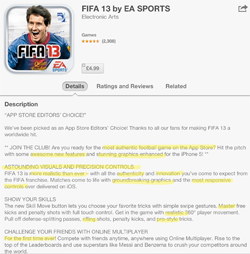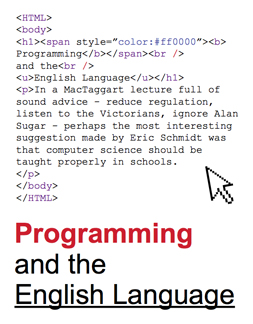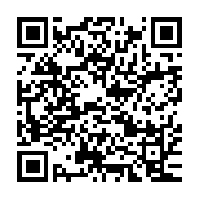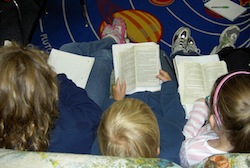
With the advances in technology hitting our classrooms on such a regular basis, we sometimes forget that the old ways are sometimes the best ways. You can have all the technology in the world, but sometimes being creative with what you've got can be a lot more powerful.
I stumbled across a fantastically creative, but amazingly simple, website a few months ago called Dear Photograph. Although the website is not intended to be an educational tool, with a bit of creative thinking, you'll find that the idea can be used to promote learning across a range of subjects.

This year, all the pupils in year 6 are using their own iPod in lessons, and they all have their own blog space as part of our class blog. In order to make the most of this technology and potential audience, we have introduced several new features to the way we teach. One of these developments is the introduction of a weekly “Guest Marker” project, where their blog is used to share written work with people from varied and specialist backgrounds who have agreed to provide feedback for the pupils. This is based on an idea discussed in Jim Smith’s excellent Lazy Teacher’s Handbook.
The idea of teaching persuasive writing using the App Store was designed to be part of the Guest Marker Project - and the “guest” who had kindly agreed to mark the work was Katie Hart, Head of External Sales at 2Simple Software.
Using Apple TV and an iPad, the App Store was mirrored onto the interactive whiteboard. A screenshot of FIFA 2013 and The Room was opened in Skitch. The pupils were asked to highlight and identify language features of persuasive advertisements as the iPad was passed around the children, who then used the 'highlight tool' in Skitch to identify persuasive words, phrases and rhetorical questions.
This delightful animated video, created by students at the French university for careers in design, Bellecour Écoles D’Art, is absolutely enchanting. Monsterbox is only about 7 1/2 minutes long, and tells the story of a young girl who is trying to find a home for her monster – and then another monster, and then another! There is no dialogue, but the graphics and characters tell the story perfectly.
Here are some of the ways that it could be used in the classroom:

In a MacTaggart lecture full of sound advice - reduce regulation, listen to the Victorians, ignore Alan Sugar - perhaps the most important suggestion made by Eric Schmidt was that computer science be taught properly in schools.
This means, as the Google Chairman pointed out, teaching children how to make computer programs rather than merely how to use them.
But in an era when GCSE marks are awarded for linking a picture of a football to the word “le football”, can pupils really cope with the protean rigours of computer programming?
Of course they can. Today’s children grow up surrounded by software. They enjoy using it so much that they are largely self-taught. They eagerly upgrade to the latest mobile phone, even if this means learning to use an entirely new operation system. Such enthusiasm and confidence are the perfect foundations on which to learn to program.

I've heard of QR codes and have seen them used in mobile advertising. I've even heard of some really good ideas on how to use them in class, including a QR code scavenger hunt. Our school is 1:1 with iPads in grades 9-12, and I've been pondering for a while on how I could use QR codes in my own classroom.
As we approached Ch. 6 & 7 of Huckleberry Finn, an idea struck me. In those chapters, Huck stages a crime scene to make it look like how he was murdered. Brilliant, I know. But most students don't see his genius behind this. So I decided to do a QR code crime scene prior to reading these two chapters.

Word banks have long been part of lessons right across the curriculum, provided to pupils to extend their vocabulary, support their writing or expand their understanding of a subject. They can be a simple but very powerful tool for learners of all ages.
When I was at school, I remember that my word banks were contained in small notebooks that we kept on our desks for easy access, in which we would add words to the lists ourselves. For today’s teachers web 2.0 tools have opened up a range of hugely exciting and motivating ways of creating and providing word banks for learners.

Letters, newspaper reports, arguments, recounts, sets of instructions, stories and much, much more. Children are writing every day, but who gets to read their finished pieces?
Today’s learners have at their fingertips the opportunity to not only write for a genuinely global audience, but also to be the audience for somebody else’s work. Take a look at some of the exciting ways that your children can find a real audience for their work every day.

There are many different views on educational policy but one thing everyone agrees on is the importance of independent reading as a cornerstone of educational development.
How to make reading attractive isn’t easy in a world where children are sophisticated consumers and budgets, space and time are limited. Competition for children’s attention is fierce and if we are serious about encouraging children to read more and develop a life-long love of reading we have to look at the whole experience. Presenting books so that they appear irresistible and children just can’t help but reach out and take them is the first step.

A community-driven platform for showcasing the latest innovations and voices in schools
Pioneer House
North Road
Ellesmere Port
CH65 1AD
United Kingdom